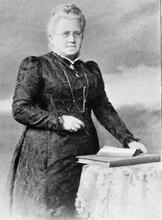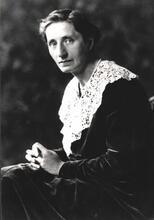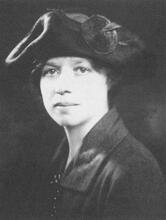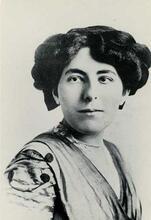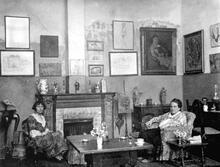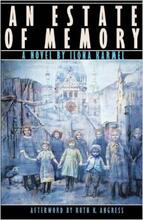Pulcellina of Blois
Pulcellina (also Polcelina, Pucellina) was a prominent and powerful Jewish moneylender in twelfth-century Blois, a French city on the Loire River in the reign of Count Thibaut V; in 1171, she was burned at the stake with more than 30 other Jews on the false accusation of murdering a Christian boy. Information about the actual Pulcellina indicates that she was formidable businesswoman with a close connection to Thibaut; almost certainly a widow, she likely worked with her two daughters. Later literary representations of Pulcellina undercut her business prowess, turning her into a tragic romantic heroine who was involved in a failed intimate relationship with Count Thibaut; in these renditions, which invoke biblical models, her downfall is attributed to the jealous machinations of Thibaut’s wife.
Historical Background
Pulcellina (also Polcelina, Pucellina) was a prominent Jewish moneylender in twelfth-century Blois, a French city on the Loire River. Her name probably derives from the Old French pucelle (“maiden”). During the reign of Count Thibaut V (1130-1191) and his wife, Alix (1150-1197/98), daughter of King Louis VII of France, Pulcellina had financial dealings with members of the court, including Alix, as well as a close relationship with Thibaut. In May 1171, Pulcellina, her two daughters, and as many as thirty additional Jews (of the approximately forty Jews of Blois), were burned at the stake. The victims included religious leaders and scholars; seventeen or eighteen of those killed were women. Thibaut justified these horrific executions as punishment for the Jews’ purported murder of a Christian boy, although the Hebrew sources state that no missing child was reported, nor was a body found. Later Jewish accounts, discussed below, suggested that Alix played a major role in instigating this massacre out of jealousy of Pulcellina. Although Jews in neighboring communities attempted to save their co-religionists, they were unable to raise a sufficient ransom. This is one of the first instances in continental Europe of a ritual murder accusation, the claim that Jews slaughtered a Christian boy in a ritual manner and/or used his blood for ritual purposes. Such accusations generally took place around A seven-day festival to commemorate the Exodus from Egypt (eight days outside Israel) beginning on the 15th day of the Hebrew month of Nissan. Also called the "Festival of Mazzot"; the "Festival of Spring"; Pesah.Passover and Easter, although this was not the case in Blois, where ritual claims were not initially part of the accusation.
Recent scholarship suggests that Thibaut’s motives were complex and are best understood in “a political and economic context that relates directly to developments in the kingdom of France” (Rose, 158). E. M. Rose has written that “The Blois burnings . . . served multiple purposes: they reinforced Thibaut V’s hold on a county that was overshadowed on all sides by wealthier towns with competing loyalties; they served to raise urgently needed funds for the count and his wife; they eliminated a contentious source of power (Pulcellina) in the small county; they celebrated and reinforced Thibaut V of Blois as a most Christian count, silencing any rumors involving his ritual impurity and as a result of his failure to produce a male heir” (170). Indeed, Robert of Tortigni (1110-1186), Abbot of Mont Saint-Michel, in a revisionist and defamatory account of these events in Gesta Normannorum Ducum (Deeds of the Norman dukes), does not even mention Pulcellina. Rather, he highlights Thibaut’s supposed religious fervor, writing that he burned the Jews of Blois because they had crucified a Christian boy at Easter, “in order to mark their contempt for Christians,” and that they were condemned to death only after the body, which they had thrown into the Loire, was discovered (Stevenson, 114-115).
Literary Portrayals of Pulcellina in Hebrew Writings
Hebrew documents related to this tragedy include a series of five letters written by various French Jewish communities in its immediate aftermath; a report in the chronicle of Ephraim of Bonn; two memorial lists naming the martyrs; and eight liturgical poems (Chazan; Einbinder 1998, 2002). This unusually plentiful literary output testifies to the profound impact of this mass martyrdom on the Jews of northern France and Germany. The earliest account appears in a letter written by the leaders of the nearby Jewish community of Orléans; it relates how a Christian servant claimed to have seen a Jew throw a boy’s body into the river. The servant’s employer is said to have seen an opportunity to cause trouble for a woman he hated who was in favor with the count. In this letter, Pulcellina, who is not named, is described as a powerful woman, acting arrogantly towards the townspeople, “with the count’s sanction,” dealing “heavily with all who came to her,” including “the countess and her nutrix [companion/mentor]”; nevertheless, “the count [ohav] loved/favored her” (Einbinder, 1998, 34-35, writes that ohav here implies “a quasi-feudal oath of patronage”). Nothing is known about the actual Pulcellina beyond this initial account. She was likely a widow who conducted her own moneylending business, probably with the assistance of her two daughters. More than half of the Jews who are documented as moneylenders in France in this era were women and many were widows, working independently or together with their children or other widows. There is no mention in any of the prose accounts of a husband or sons, nor is it possible to know the nature of Pulcellina’s relationship with Thibaut beyond the fact that some kind of familiar connection existed, likely based on shared profits from her economic transactions.
Jewish literary representations of Pulcellina’s privileged position, downfall, and the attendant consequences for her community evolved over time. One dominant theme is the biblical motif of the Court Jew. This pattern, established in biblical accounts of figures such as Joseph and Esther, was reiterated in varying ways during the medieval and early modern eras. What sets Pulcellina’s story apart from those of most historical Court Jews, however, is that she was a woman. Her gender determined the ways in which she was represented in literary reconstructions of the events at Blois, from the twelfth to the twentieth century. Although the historical Pulcellina had achieved an important economic role in the highest circles of Blois through her entrepreneurial success and financial acumen, she was transformed in later accounts to an object of desire, who was said to have had a sexual liaison with a powerful gentile ruler. In this, she is similar to the biblical Esther; in the case of Pulcellina, however, the story does not have a happy ending.
In his Sefer Zekhirah (Book of Remembrance), written in the late 1190s, the chronicler and poet Ephraim of Bonn (1132-1200) eliminated most of the negative references to Pulcellina that appear in the Orléans letter, “reshaping this problematic figure while minimizing her political importance” (Einbinder 2002, 48). As Susan Einbinder points out, Pulcellina was recast as a religious and romantic heroine, “who exhorts her people like the biblical Esther and strives to intercede on their behalf” (idem; and see 1998, 36). Ephraim used various forms of the verb ohav to describe Thibault’s feelings for Pulcellina, writing that she encouraged the other imprisoned Jews, “for she trusted in the Count’s love (ahavat ha-shilton) since he had loved (ohavah) her greatly until now” (Einbinder, 1998, 33-35). Many subsequent readers of the chronicle have understood Ephraim to be referring to a sexual relationship between Pulcellina and the Count. However, based on her close analysis of the documents, Einbinder argues, instead, that Ephraim uses ohav to mean that Thibaut “favored” Pulcellina as a lender and trusted financial advisor. She cites two other instances from Sefer Zekhirah where ohav is used with the meaning of “loyal devotion” (1998, 34-35). Ephraim describes Pulcellina as a gevartanit, “a powerful” (or perhaps “manly”) “woman” (Horowitz), and recounts the widespread resentment of her economic success and perceived influence over the count. He also adds the new element of Countess Alix, who is characterized as a “Jezebel” (a reference to the wicked wife of King Ahab of Israel in 1 Kgs 16-22); it is Alix’s hatred of Pulcellina, supported by the machinations of an Augustinian churchman, that causes the moneylender’s downfall. Einbinder suggests that Alix’s animosity stemmed from her own debts to the powerful moneylender, as implied in the Orléans letter, rather than sexual jealousy. Ephraim repeats the statement from the Orléans letter that Pulcellina was unfettered during her imprisonment and treated more leniently than the other prisoners, but was forbidden access to Thibaut to plead her case (Einbinder 1998, 34-35).
In his Emeq Ha-Bakha (The Valley of Tears), Joseph Ha-Kohen (1496 -- c. 1575), who spent most of his life in Italy, transformed Pulcellina into a “woman of valor” who was involved in a romantic relationship with Count Thibaut. When the Jews of Blois were accused of killing a child, the count arrested all of them. Although Pulcellina continued to trust in Thibaut’s affection, Joseph writes that Countess Alix “diverted him and spoke hatefully of the Jews… Then the woman [Pulcellina] was not pleasing to him and he hated her greatly” (Einbinder 1998, 37-38). As in the other versions, Thibaut’s servants prevented Pulcellina from speaking to Thibaut; this reversal of the queen’s effective appeal to the king in the biblical book of Esther dooms the Jews of Blois. Einbinder, who also points out Joseph’s reference to the biblical story of Amnon’s rejection of Tamar after he had raped her (2 Sam 13), suggests that it was easier for a Renaissance writer to imagine a woman as a “failed romantic heroine” (Einbinder 1998, 39) than as an independent and powerful financier. Moreover, she writes, “Modern historians, too, have been more than willing to accept Pulcellina’s role as a woman foolishly enmeshed in a futile and ultimately fatal relationship with Count Thibault,” noting that later representations of Pulcellina are typical of how Jewish prose and poetry romanticized real individuals into “idealized figurations” (idem, 39-40). This tragedy and its female protagonist remained in Jewish memory. In 1927, Shlomo Dov Goitein, who went on to become the preeminent scholar of the Cairo Genizah documents, wrote Pulzelinah, a Hebrew play, that drew on Ephraim of Bonn’s chronicle as well as Hebrew liturgical poems by Ephraim and his brother, Hillel. He depicts Pulcellina as both a fearsome businesswoman and a model of piety who led prayers for other women. Yet, she is also sexualized as highly attractive to men, even as she resists their advances (Horowitz).
Chazan, Robert. “The Blois Incident of 1171: A Study in Jewish Intercommunal Organization.” Proceedings of the American Academy of Jewish Research (1968): 13–31.
Einbinder, Susan. Beautiful Death: Jewish Poetry and Martyrdom in Medieval France. Princeton, NJ: Princeton University Press, 2002.
Einbinder, Susan. “Pucellina of Blois: Romantic Myths and Narrative Conventions.” Jewish History 12 no. 1 (1998): 29–46.
Ephraim of Bonn, “The Ritual Murder Accusation at Blois, 1171,” in Jacob Rader Marcus, The Jew in the Medieval World: A Sourcebook: 315-1791, 127-130. Rev. ed. with introduction and revised bibliography by Marc Saperstein. Cincinnati: Hebrew Union College Press, 1999 (originally New York: Union of American Hebrew Congregations, 1938).
Horowitz, Elliott. “Dangerous Liaisons: Modern Scholars and Medieval Relations Between Jews and Christians.” Jewish Review of Books 17 (Spring, 2014); https://jewishreviewofbooks.com/articles/737/dangerous-liaisons-modern-….
Rose, E. M. The Murder of William of Norwich: The Origins of the Blood Libel in Medieval Europe. New York: Oxford UP, 2015.
Stevenson, Joseph, trans. The Chronicles of Robert de Monte. Somerset, UK: Llanerch Press, 1991.


